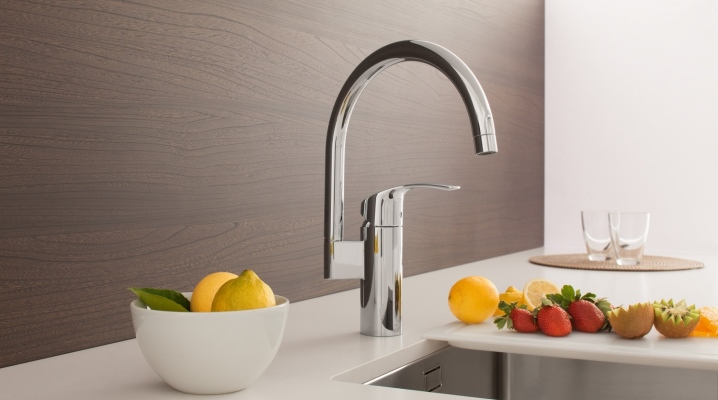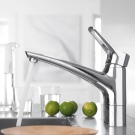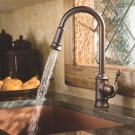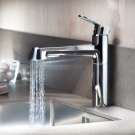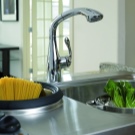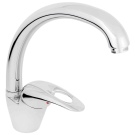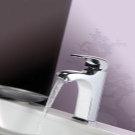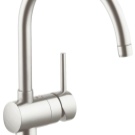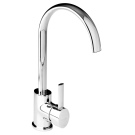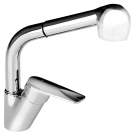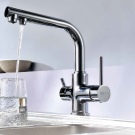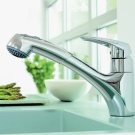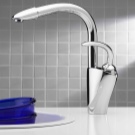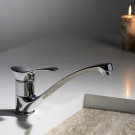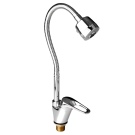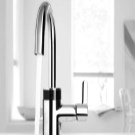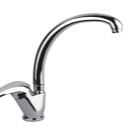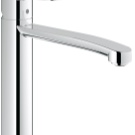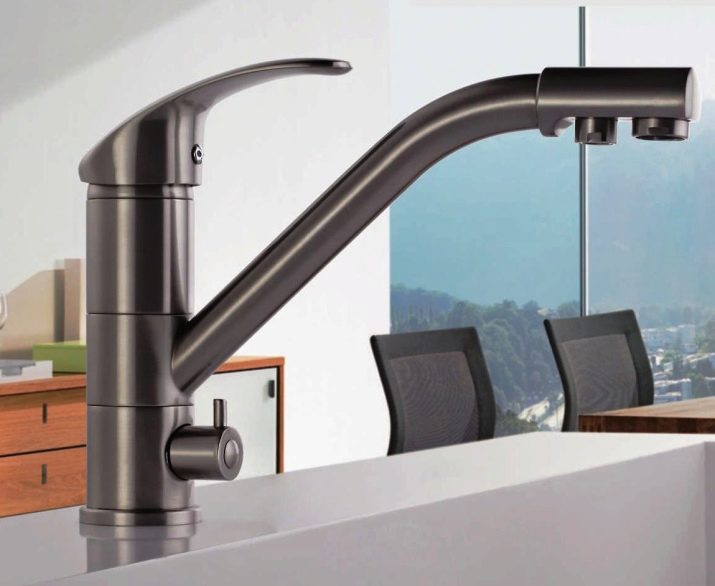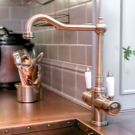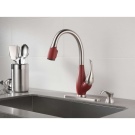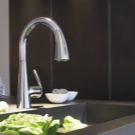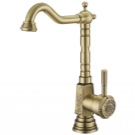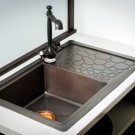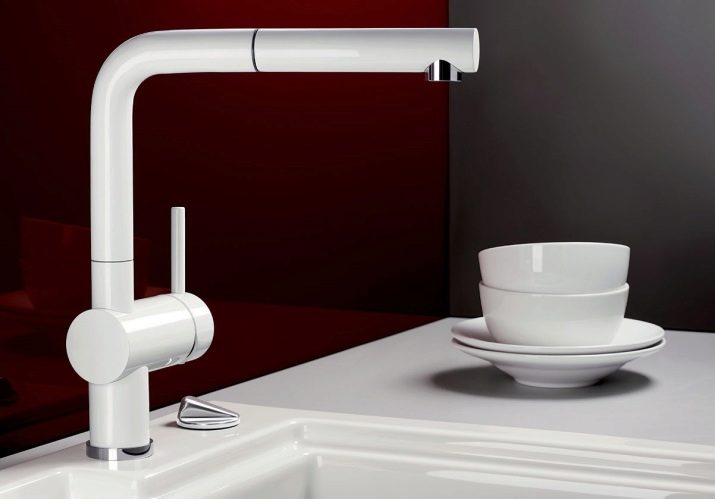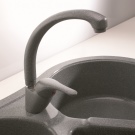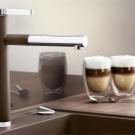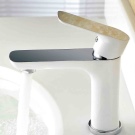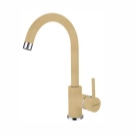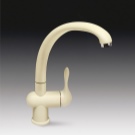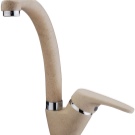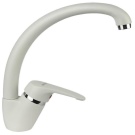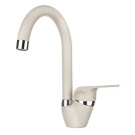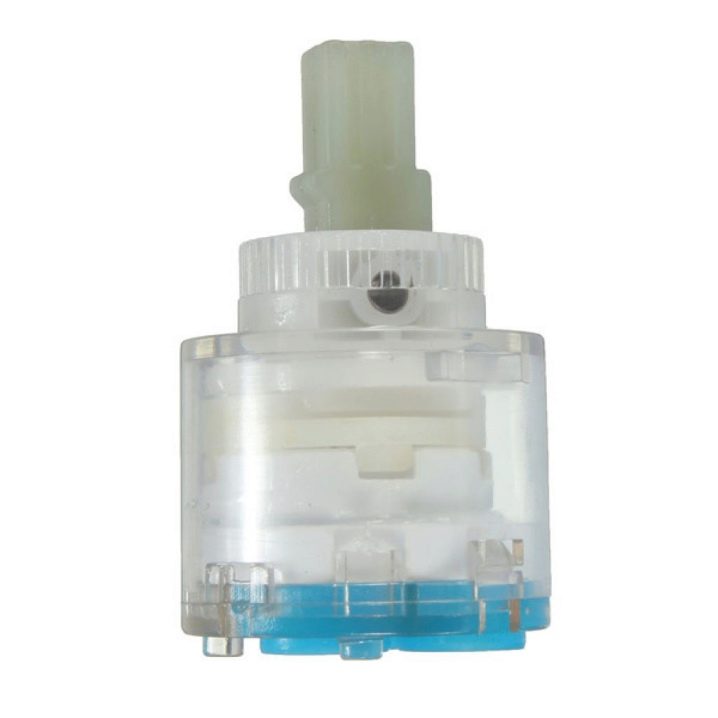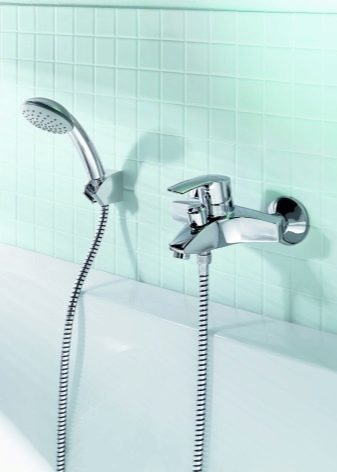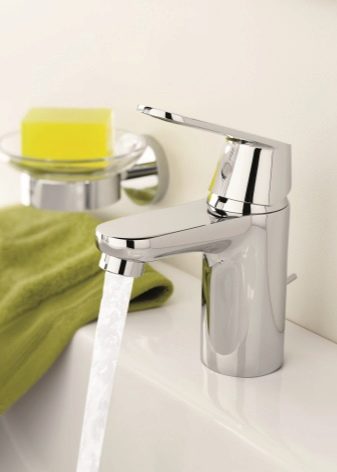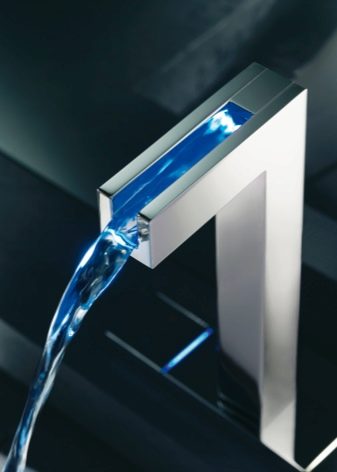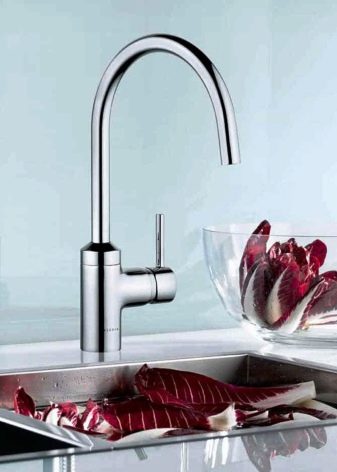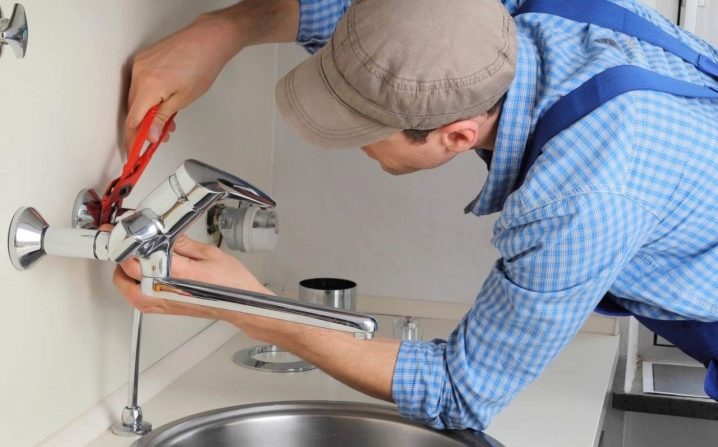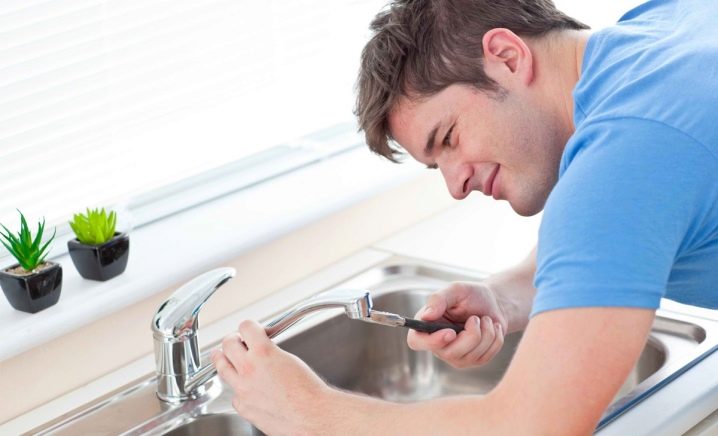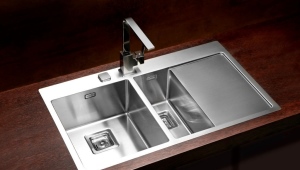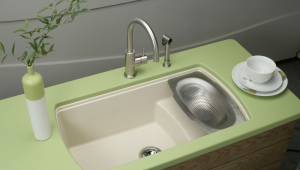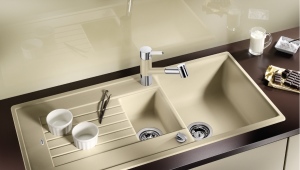Single lever kitchen mixer
Kitchen faucet selection - The task is sometimes not easy, because it must be durable, reliable and in harmony in color and texture with a sink or tabletop. Most buyers increasingly prefer the single-lever kitchen faucet. In this article we will try to reveal the secret of its popularity.
Benefits
- Firstly, in terms of its reliability, such a model surpasses a two-valve crane - the absence of a soft inner gasket, which often deteriorates, makes the single-lever crane more durable;
- Secondly, it is very convenient in operation - a slight turn of the lever will instantly ensure the supply of water of the desired temperature;
- Thirdly, in the internal structure of such an accessory less scale is formed, which significantly increases its service life;
- Fourth, if a cartridge breaks down inside such a mixer, it is not at all necessary to buy a new faucet, it is enough to install a replaceable cartridge yourself;
- Fifth, a variety of models allows you to choose the right accessory of any manufacturer: German, Russian, Chinese, Finnish, Italian and many others for every taste and budget.
Material
As the main material for the manufacture of this type of mixer, various metal alloys - stainless steel, brass with the addition of chromium and bronze. Metal products have a long service life. They are hygienic, have an attractive appearance, are durable and durable. The outer coating can be presented as a matte or glossy surface, coated with imitation of a stone, painted in various colors, with silicone.
Ceramic mixer in its basic qualities similar to the metal - environmentally safe, reliable. Outwardly, it is, of course, more attractive, has a smooth and smooth surface. From the point of view of strength, ceramic parts are inferior to metal alloys. In addition, under the influence of temperature drops ceramics can crack.
The use of plastics in the manufacture of mixers has several advantages and disadvantages. One side,The low cost and ease of product design is a significant plus, on the other hand, low performance and dubious strength do not add to the popularity of the polymer mixer.
Internal organization
The mechanism of single-lever mixers of different models has no fundamental differences. At the heart of their stand out:
- A handle with which you can easily control the flow of water;
- Housing with a special lid, made of various materials: stainless steel, brass, chrome, artificial stone, plastic or ceramics;
- Spout;
- Hoses, as a rule, from flexible steel for supply of cold and hot water;
- Fixing bracket (for wall models);
- The main element is a replaceable cartridge.
Types of cartridges
Cartridges are aluminum ball and ceramic. Consider the main pros and cons of each of the models.
Ball. The name of the main part in this case speaks for itself - it is a ball with three holes. The mixing of water occurs inside the ball at the time of its rotation. It should be noted that the risk of lime deposits in such a cartridge is higher than in the ceramic.
Ceramic. These models are recognized better than ball analogues in durability. The gap between the thin ceramic plates that make up its base is less than water molecules, therefore, no deposit on the surface of ceramics is formed. The relatively low cost of such parts adds to their popularity. The only drawback of this type of cartridge is its sensitivity to small particles, such as sand. The use of ceramic cartridges together with coarse water filters can completely solve this problem.
Kinds
According to the method of installation, all single-lever mixers are divided into wall-mounted faucets, which are installed above the sink on the wall, and those mounted in the hole in the sink or in the countertop.
In addition, mixers differ in height spout. The height is chosen subjectively and depends on personal preferences and the size of the shell. So for a round deep sink it is better to choose a model with a high spout, which is very convenient not only for washing dishes, but also for recruiting water in different containers. Do not forget about the parameters of their own growth - too high outflow will contribute to the leaking muscles of the arms and neck.The optimum height is 15 cm.
As noted above, in case of breakage of the single-lever mixer, it is possible to replace the damaged part without replacing the accessory itself. What are the popular causes of failure?
Main malfunctions
Basically, the causes of failure of this type of mixer are always of the same type:
- The seal in the ball valve can wear out and give a leak - you have to disassemble the kitchen faucet and replace the damaged part. In the event that a crack appears on the spherical cartridge itself, it will have to be replaced with a new one;
- A more durable ceramic cartridge may break as a result of a grain of sand that has fallen between its plates - you will have to change a part for a similar serviceable one;
- Hoses may also leak over time - in this case it is necessary to tighten the connections;
- If microcracks appear on the body of the crane, its surface can be treated with a sealant for protection. If this action does not help, unfortunately, there is nothing left but how to change the mixer to a new model.
Mixer disassembly
How to disassemble a single lever mixer for replacing the cartridge?
The first step is to turn off the water.Next, unscrew and pull out the plastic cap, which is a symbol of cold and hot water on the handle of the tap. After that, loosen the knob of the mixer and unscrew it. The next action unscrew the cover of the case. Then with a wrench, unscrew the nut retaining the cartridge in the body of the product. We take out the replacement valve and replace it with a new one. It remains only to collect the accessory in the reverse order. Technology cartridge replacement - the process is simple and takes only a few minutes.
Thus, durability, ease of operation, a variety of models and speed of repair make single-lever faucets the most popular of all modern types of faucets for the kitchen.
